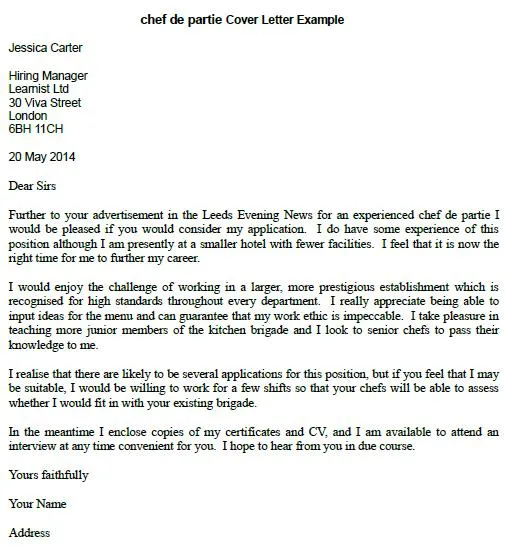Understanding the Importance of a Private Chef Cover Letter
A private chef cover letter is more than just a formality it is your initial introduction to a potential employer and a critical tool in securing your dream job. In a competitive field, a well-crafted cover letter serves as your personal marketing document, providing you the chance to make a positive first impression. The purpose of this guide is to provide you with a comprehensive understanding of how to write a compelling cover letter that captures the attention of potential employers and showcases your skills, experience, and enthusiasm for the role of a private chef. It is your opportunity to go beyond your resume and show your personality and why you are the perfect candidate. Your resume provides the facts, but your cover letter provides the flavor.
Why a Cover Letter Matters
A cover letter allows you to express your passion for culinary arts and demonstrate how your skills and experiences align with the specific requirements of the private chef position. It demonstrates that you have taken the time to tailor your application to the employer’s needs. It provides a platform to expand on your resume by highlighting relevant experiences and quantifying achievements, providing a more detailed narrative of your capabilities. It humanizes your application, allowing you to showcase your personality, work ethic, and communication skills, making you more memorable to the hiring manager. Furthermore, it helps you stand out from other applicants by demonstrating your interest and enthusiasm for the position.
Highlighting Key Skills and Experiences

When crafting your private chef cover letter, it is essential to highlight your relevant skills and experiences. Begin by identifying the key skills and experiences that align with the job description. Include your culinary expertise, such as cooking various cuisines, creating menus, and managing food costs. Showcase your experience in preparing meals for different dietary needs and preferences, as well as your ability to work with high-profile clients. Quantify your achievements whenever possible by providing specific examples of successful projects. For instance, mention how you reduced food costs, improved client satisfaction, or managed a specific number of guests. By highlighting your key skills and experiences, you’ll demonstrate your qualifications and make a compelling case for why you are the ideal candidate.
Essential Components of a Private Chef Cover Letter
Contact Information and Salutation
Start your cover letter by including your full name, contact information (phone number, email address, and LinkedIn profile URL, if applicable), and the date. This information should be located at the top of the letter, making it easy for the hiring manager to reach you. Address the letter to the specific person hiring whenever possible. If the name is unknown, use a professional salutation, such as “Dear Hiring Manager” or “Dear [Company Name] Team.” This personalized approach demonstrates that you have taken the time to research the employer and are genuinely interested in the position.
Personalized Opening

Your opening paragraph should immediately capture the reader’s attention and set the tone for the rest of your letter. Express your enthusiasm for the private chef position and mention where you found the job posting. Briefly state why you are interested in the role and what makes you a strong candidate. Tailor your opening to the specific employer and position by referencing something unique about their company or the role’s requirements. Avoid generic openings; instead, showcase your personality and make it clear that you have researched the employer and are genuinely interested in the opportunity.
Showcasing Culinary Skills and Expertise
The body of your cover letter is where you showcase your culinary skills and expertise. Highlight your experience in preparing a variety of cuisines, catering to dietary restrictions, and creating custom menus. Demonstrate your knowledge of food safety practices, inventory management, and kitchen organization. Mention any special skills you possess, such as pastry making, wine pairing, or experience with specific equipment. Provide specific examples of your culinary achievements and how you have successfully met the needs of previous clients or employers. Use strong action verbs to describe your accomplishments and quantify your achievements whenever possible.
Quantifying Achievements and Experience
Whenever possible, quantify your achievements and experience to provide concrete evidence of your capabilities. Instead of saying “I improved client satisfaction,” state “Increased client satisfaction scores by 20% by implementing a new menu and gathering feedback.” Mention the number of meals you have prepared, the size of events you have catered, or the amount of money you have saved on food costs. Quantifying your achievements demonstrates your ability to deliver results and makes your cover letter more compelling. Use data to provide concrete evidence of your skills and experience, making your application more persuasive.
Highlighting Relevant Certifications and Training
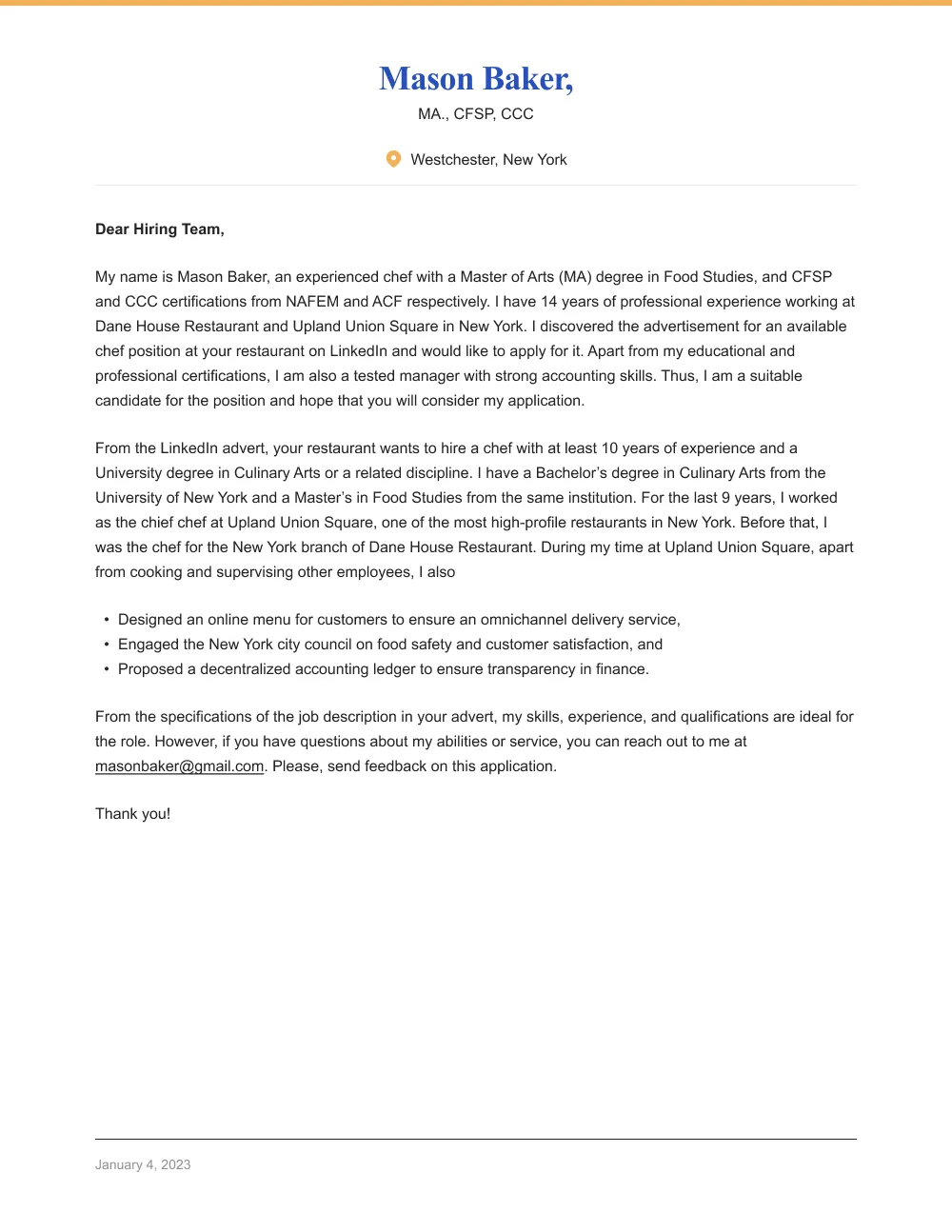
Include any relevant certifications and training to enhance your credibility. This may include certifications in food safety, culinary arts degrees, or specialized training courses. List your certifications clearly and concisely, along with the issuing organization and dates of completion. Highlight any training that demonstrates your commitment to professional development. Mention any continuing education courses, workshops, or seminars you have attended. Mention any culinary awards or recognitions you have received to further impress potential employers and highlight your skills.
Demonstrating Professionalism and Personality
Your cover letter should demonstrate your professionalism and showcase your personality. Use a professional tone throughout the letter, avoiding slang or informal language. Show your enthusiasm for the position and the employer. Highlight your passion for culinary arts and your ability to provide exceptional service. Demonstrate your ability to work independently, as well as your communication and interpersonal skills. Include a brief anecdote or personal touch to make your letter more memorable. Ensure that your cover letter reflects your professionalism, personality, and enthusiasm for the private chef role.
Expressing Enthusiasm and Interest
Expressing your enthusiasm and interest is crucial in your cover letter. Clearly state why you are interested in the private chef position and what attracts you to the employer. Mention specific aspects of the job or company that resonate with you. Demonstrate that you have researched the employer and understand their needs. Showcase your passion for culinary arts and your commitment to providing exceptional service. Explain why you are confident that your skills and experience align with the position. Your enthusiasm will leave a lasting impression and make you stand out from other candidates.
Proper Closing and Call to Action
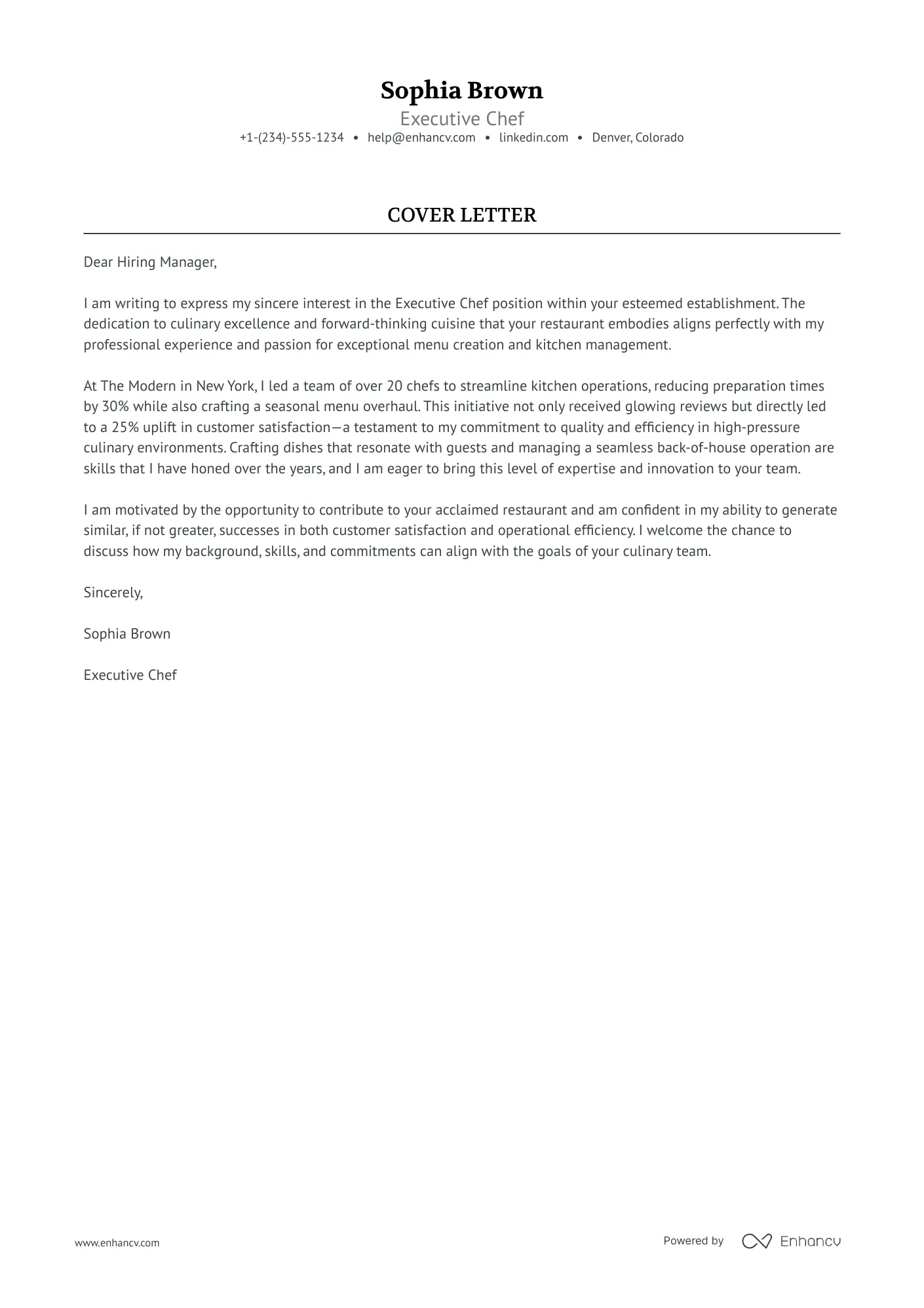
End your cover letter with a strong closing paragraph that reiterates your interest in the position. Thank the reader for their time and consideration. Express your eagerness to discuss your qualifications further and provide a clear call to action. State your availability for an interview and the best way to contact you. Ensure that your closing is professional, polite, and memorable. Restate your enthusiasm, thank the employer for their time, and make it easy for them to reach you.
Formatting and Proofreading for a Polished Look
Choosing the Right Font and Layout
The formatting and layout of your cover letter are important for readability and professionalism. Choose a professional font, such as Times New Roman, Arial, or Calibri. Ensure the font size is between 10 and 12 points for easy reading. Use consistent formatting throughout the document, including headings, bullet points, and spacing. Organize your content into clear paragraphs and sections, using headings and subheadings to guide the reader. Maintain a professional appearance and avoid distracting formatting choices. Your cover letter’s formatting should be clean and easy to read, helping the reader focus on your content.
Proofreading for Errors and Ensuring Clarity
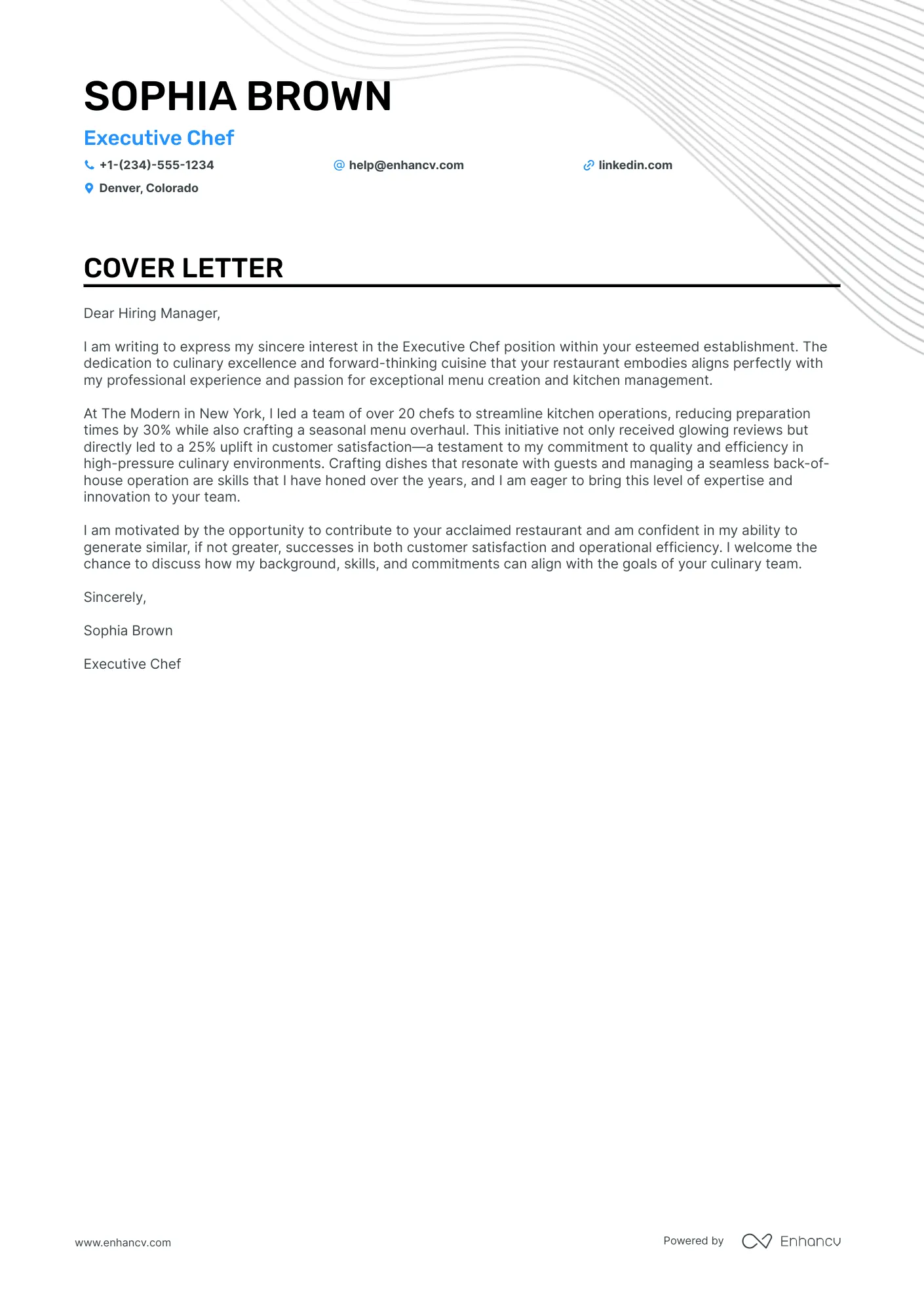
Proofreading is a crucial step in the cover letter writing process. Carefully proofread your cover letter for any grammatical errors, spelling mistakes, or typos. Ensure that your sentences are clear, concise, and easy to understand. Check for correct punctuation, capitalization, and sentence structure. Ask someone else to review your cover letter for a fresh perspective. Multiple rounds of proofreading are recommended to catch any errors you may have missed. A well-proofread cover letter demonstrates your attention to detail and professionalism.
Common Mistakes to Avoid in Your Cover Letter
Generic Cover Letters
Avoid using generic cover letters that are not tailored to the specific job or employer. Generic cover letters show a lack of effort and can be easily dismissed by the hiring manager. Customize your cover letter to each application by researching the employer and understanding their needs. Highlight the skills and experiences that align with the job description. Tailor the content to the specific requirements and show genuine interest in the position. Avoid sending the same cover letter to every job; this demonstrates that you are truly interested in the opportunity.
Focusing Solely on Responsibilities
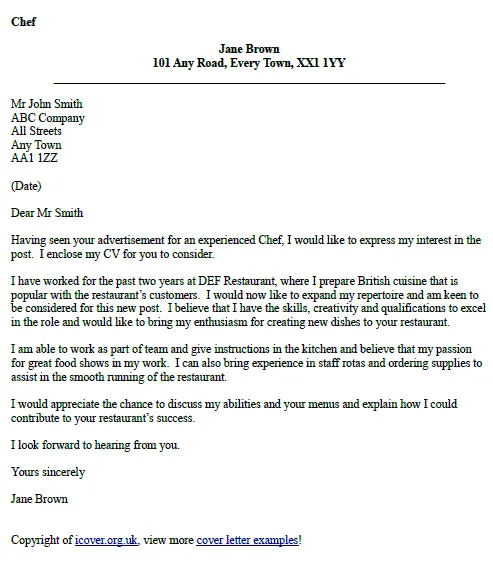
While it is important to mention your responsibilities, do not focus solely on them. Employers are more interested in your accomplishments and the results you have achieved. Go beyond describing your duties and highlight your achievements, quantify your successes whenever possible. Demonstrate your ability to add value to the role. Use action verbs to describe your achievements. Showing your accomplishments will help your application stand out from the rest.
Neglecting Proofreading
Neglecting proofreading is a common mistake that can damage your chances of getting the job. Errors in your cover letter can make you appear unprofessional and careless. Always proofread your cover letter carefully for any grammatical errors, spelling mistakes, and typos. Ask someone else to review your cover letter for a fresh perspective. Correcting any errors ensures that your application is polished and error-free. Take the time to proofread, as it will show your attention to detail.
Tailoring Your Cover Letter for Each Application
Researching the Employer and Their Needs
Before writing your cover letter, research the employer and their needs. Visit their website, read their social media profiles, and understand their mission, values, and clients. Tailor your cover letter to align with their specific requirements. Highlight the skills and experiences that match the job description. Show that you understand the employer’s needs and how you can contribute to their success. Demonstrate your knowledge of the employer and the role. Take time to research the employer, and you will be able to tailor your cover letter more effectively.
Customizing Your Letter to Match the Job Description
Carefully review the job description and identify the key requirements and qualifications. Customize your cover letter to match these requirements. Highlight the skills and experiences that are most relevant to the position. Use the same keywords and phrases as the job description. Tailor your letter to the specific role and employer. Demonstrating how you fulfill the job requirements increases your chances of getting the job.
Providing a Call to Action
A call to action encourages the employer to take the next step. In your closing paragraph, provide a clear call to action. Express your eagerness to discuss your qualifications further and ask for an interview. Provide your contact information and indicate your availability. Ensure that the call to action is clear, concise, and actionable. The call to action should be memorable and encourage the employer to reach out to you.
